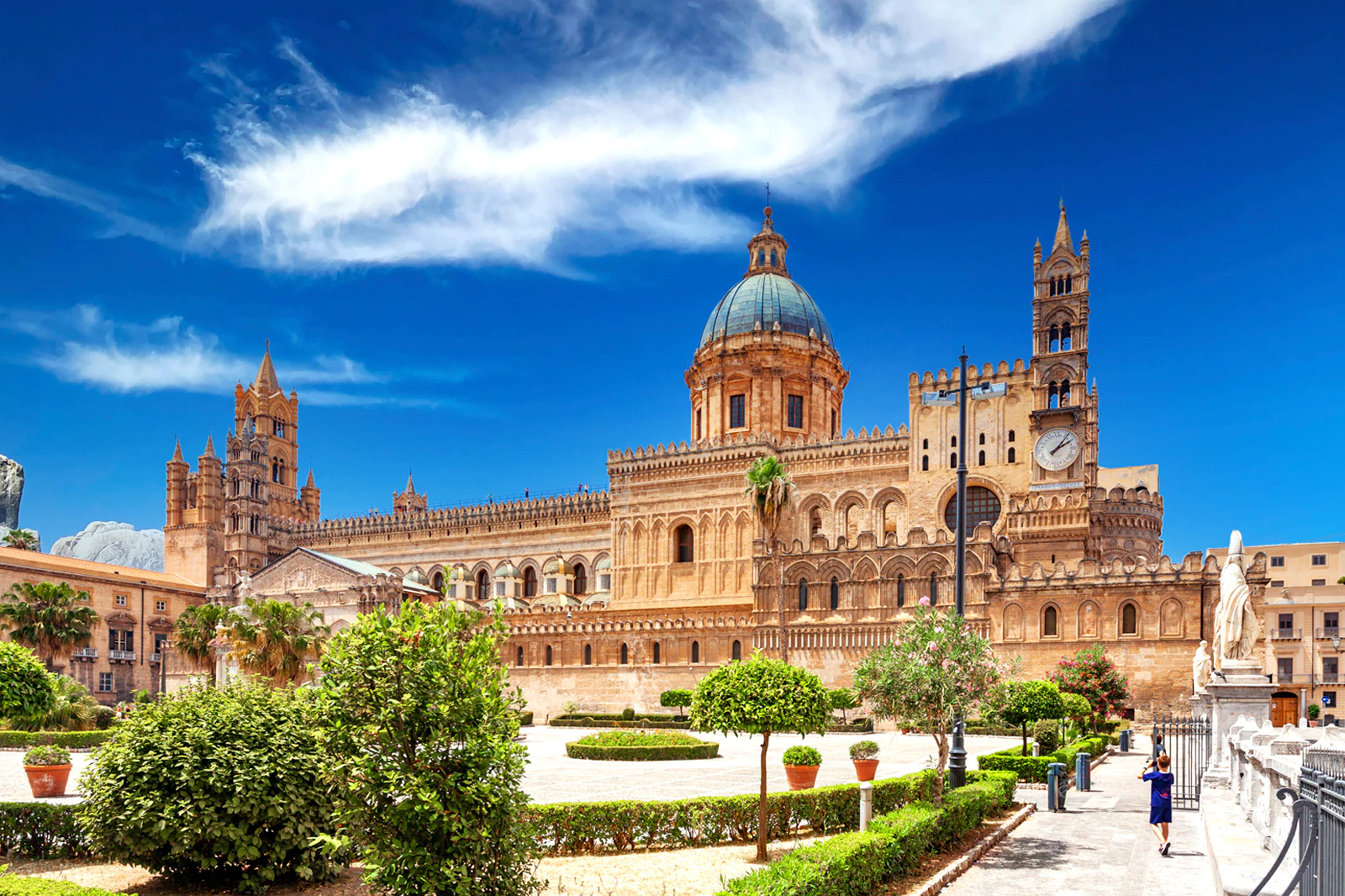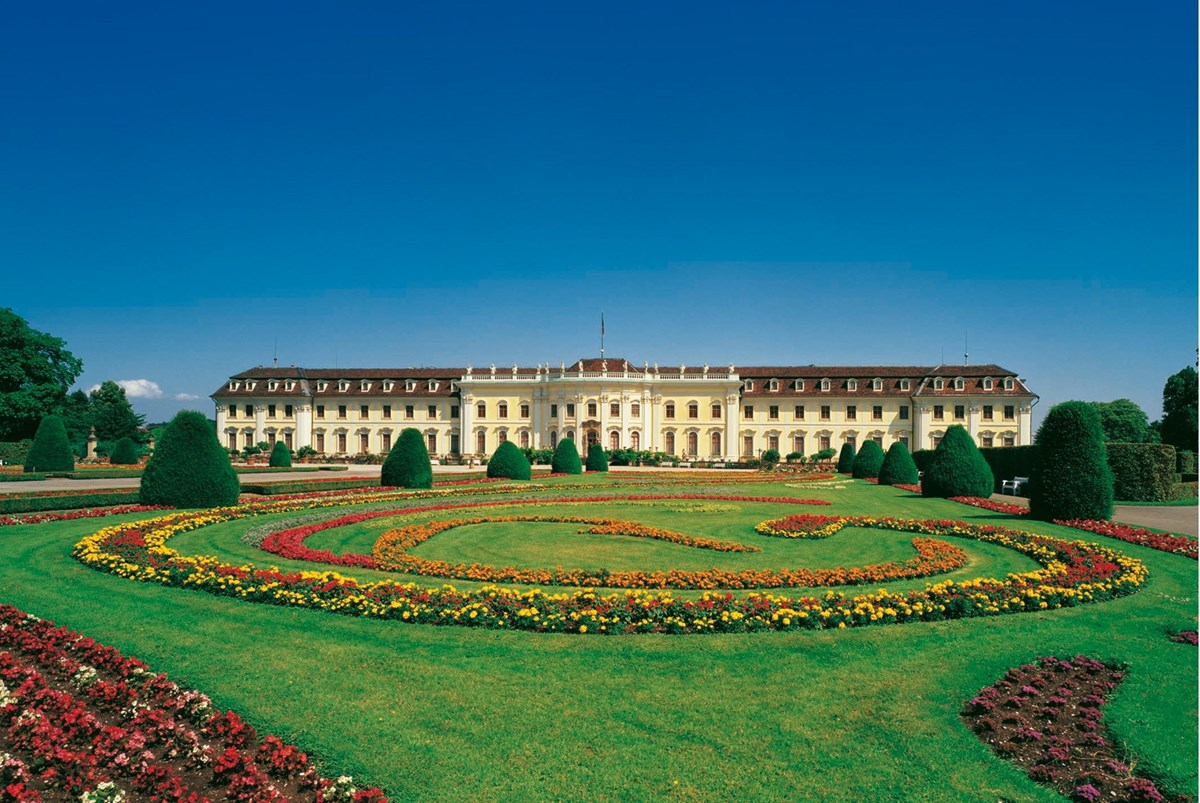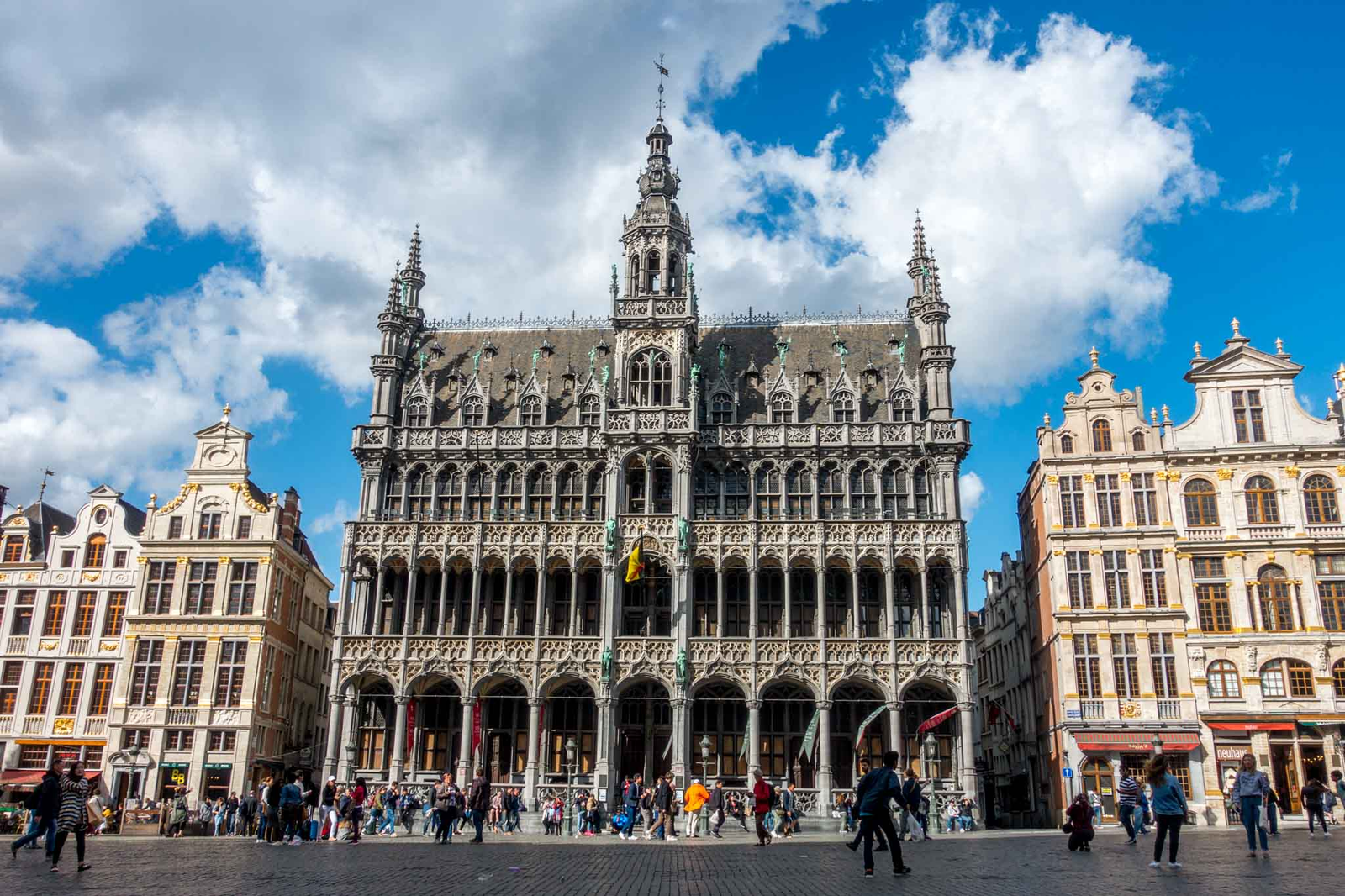| Activity | Description |
|---|---|
| Explore Vieux Lille (Old Lille) | Historic district with Flemish architecture, shops, and cafes. |
| Tour La Piscine Museum | Art museum in an Art Deco pool with sculptures and paintings. |
| Lille City Pass | Pass for free public transit and discounted museum entries. |
| Climb the Lille Bell Tower | Panoramic views of Lille and historical displays. |
| Browse the Wazemes Sunday Market | Large open-air market with various products. |
| Taste Local Beers at Estaminet | Traditional taverns offering Belgian beers and regional fare. |
| Discover Little Flanders | Villages near Lille with Flemish culture and architecture. |
| Visit LaM Modern Art Museum | Modern art museum with 20th and 21st-century works. |
| Relax Along the Deûle River at Citadel Park | Park with trails, gardens, and water activities. |
| Shop at Euralille Mall | Large shopping mall with various brands and entertainment. |
| Day Trip to Ghent, Belgium | Medieval city with gothic architecture and canals. |
| Learn Flemish History at La Piscine Museum | Museum with a collection spanning various eras. |
| Taste Moules Frites (Mussels and Fries) | Classic dish available in many local eateries. |
Explore Vieux Lille (Old Lille)

Name and Location: Vieux Lille (Old Lille), Lille, France
History and Significance: Vieux Lille is the historic heart of the city of Lille. This pedestrianized area features winding cobblestone streets, ornate 17th-18th century buildings, and the Grand Place central square. Vieux Lille reflects Lille’s Flemish past as part of the Spanish Netherlands.
What to Expect: Strolling through Vieux Lille allows you to take in the Baroque architecture and lively squares. Don’t miss sights like the Stock Exchange, Vieille Bourse, and Cathedral Notre-Dame-de-la-Treille. There are many shops, cafes, and restaurants packed into the charming streets.
Visitor Information: Vieux Lille is compact and walkable. Guided walking tours are available to learn more about Lille’s history. The area is a 5-minute metro ride from Lille Flandres station. Admission to the old town is free.
Cobblestone streets lined with Flemish-inspired architecture in shades of brick and pastel make up the lovely historic district of Vieux Lille. Once enclosed behind city walls, the area holds Lille’s most interesting sights. Around leafy small squares like Place du Général de Gaulle sit 17th century homes, shops and cafes perfect for leisurely strolling as you take in architectural details.
Tour La Piscine Museum

Name and Location: La Piscine Museum, 23 Rue de l’Hospice, Lille, France
History and Significance: La Piscine is an art museum located in a converted Art Deco-style public bath house. The pool remains as the museum’s centerpiece. La Piscine opened in 2001 and displays over 1,600 works spanning from antiquities to contemporary art. The Flemish, Renaissance, and modern art collections are highlights.
What to Expect: Visitors can admire paintings, sculptures, and decorative arts set dramatically against the former swimming pool backdrop with natural lighting. Exhibits provide insight into Lille’s history and artistic heritage. Temporary exhibitions also take place.
Visitor Information: La Piscine is open Tuesday-Thursday 10am-6pm, Friday 11am-8pm, weekends 11am-6pm, closed Mondays. Admission is around €9. The museum is a short walk from Gambetta metro station.
Set in a converted Art Deco swimming pool, this small museum has a delightful setting to match its superb collection of sculptures and paintings by masters like Rodin, Matisse and Monet. The pool itself still captivates in the main hall under expansive glass ceilings. Don’t miss the Flemish and French drawings collection plus garden perfect for contemplating works over coffee.
See The Lille City Pass

Name and Location: The Lille City Pass, Lille, France
History and Significance: The Lille City Pass is a sightseeing card that provides discounted access to Lille’s top museums and attractions. It allows visitors to customize their experience by selecting attractions and transportation. The pass helps streamline planning and savings.
What to Expect: The Lille City Pass can be purchased for 24, 48, or 72 hours. It includes free public transport, discounts up to 50% on museums/attractions like La Piscine, the zoo, and more. An included city guide outlines participating venues. Some deals are online-only.
Visitor Information: The Lille City Pass can be purchased on the visitlille website or at the Lille Tourist Office. Prices start around €25-45 based on duration. Combination train + city pass deals are also available for those traveling to Lille.
Sightseeing in Lille is made easy with the Lille City Pass allowing free public transit use and free or discounted entry into museums and city attractions for 24, 48 or 72 hours. As many sites are spread throughout the city, the pass allows hopping trams and buses conveniently while saving money if you pack lots of sightseeing into your visit. Buy it at the tourist office or online.
Climb the Lille Bell Tower

Name and Location: Lille Bell Tower, Place Gilleson, Lille, France
History and Significance: The Lille Bell Tower is part of the Gothic-style Saint-Maurice church constructed in the 15th-16th century. At 104 meters tall, the tower dominates Lille’s skyline. Its height earned it the nickname “Guard of Flanders.” Visitors can climb it for panoramic city views.
What to Expect: Climbing the tower’s 400 steps rewards you with an incredible aerial perspective over Lille. Exhibits explain the bell tower’s history and Gothic architecture along the ascent. The tower’s 17th century bells can be admired up close.
Visitor Information: The bell tower is open daily 10am-1pm, 2-5:30pm April-October, weekends only in winter. Admission is around €7. The tower can be accessed from Place Gilleson in Vieux Lille.
For panoramic views across Lille and into Belgium, climb the 300 steps up the Lille Bell Tower in the Old Town. On a clear day, you can see all the way to the North Sea just 19km away. The tower is the last vestige left standing of the shattered Saint-Pierre-et-Saint-Paul church destroyed in a WWII air raid. Displays inside document the destruction and bell tower history.
Browse the WAZEMES Sunday Market

Name and Location: Wazemmes Sunday Market, Place de la Nouvelle Aventure, Lille, France
History and Significance: The Wazemmes open-air food market takes place every Sunday in Lille’s culturally diverse Wazemmes district. Established in the 19th century, it’s one of France’s largest and most vibrant weekly markets. Over 1,200 vendors sell a huge array of goods reflecting Lille’s international flavor.
What to Expect: This massive market stretches across several neighborhoods and offers everything from fresh produce and meat to clothing, flowers, spices, and more. It provides a feast for all the senses and showcases Lille’s multicultural community. Come hungry!
Visitor Information: The Wazemmes market operates Sundays from 7am-2pm. Entry is free; just come prepared to navigate the crowds. The nearest metro stop is Gambetta. Arrive early to beat the masses. Some cafes stay open late post-market.
Lille locals start their Sunday right scouring the extensive WAZEMMES open air market just north of the city center. Hundreds of stalls sell fresh produce, cheeses, bread, spices, meat, flowers, vintage items and more while shoppers and friends meet and greet. Plan to spend an entire morning browsing here. Grab an espresso from a cafe along nearby Rue des Sarrazins or Rue Jules Guesde.
Taste Local Beers at Estaminet

Name and Location: Estaminets, various locations in Lille, France
History and Significance: Estaminets are traditional small taverns unique to Flanders and northern France. In the past, they served as neighborhood meeting places and offered food, drink, and conviviality. Many historic estaminets still operate in Lille and make great spots to sample beers from the region.
What to Expect: Lille’s estaminets have preserved their old-world atmosphere with wood beams, rustic decor, and locals chatting around the bar. Sip local Flemish-style beers like l’Angelus while snacking on regional dishes like cheese, charcuterie, and carbonnade flamande stew.
Visitor Information: Historic estaminets to try include À l’Estaminet (Rue de Gand), Estaminet Ô Confluent, and Estaminet Marcel. No reservations are required. Many estaminets close on Sundays and Mondays.
Sample Belgium’s exceptional beer culture by visiting one of Lille’s traditional Estaminets, taverns selling beers and regional fare. Au Vieux de la Vieille on Rue de Gand has artisanal brews and classic dishes in an old-time atmosphere. Or try cozy La Capsule along Rue de Thionville for hundreds of bottled choices. Relax and watch locals engaged in lively conversation.
Discover Little Flanders Around Lille

Name and Location: Little Flanders towns around Lille, France
History and Significance: The Little Flanders towns around Lille showcase traditional Flemish culture through their architecture, Belgium-influenced cuisine, and artisan traditions. Destinations like Cassel and Bergues offer a charming glimpse into the Flanders lifestyle.
What to Expect: These towns allow you to see historic Flemish houses, winding cobblestone streets, impressive town halls, panoramic views, and local cuisine. Bergues was used as a filming location in the 2008 French film Welcome to the Sticks.
Visitor Information: Little Flanders towns make easy day trips from Lille by car, bus or bicycle. Highlights include Cassel, Bergues, Bailleul, and Armentières. Visit on weekends when more businesses are open. Some guided tours available.
Just 15 minutes from Lille,the country villages around share a culture and language tied closely to Belgium and Flanders due to centuries switching between French and Flemish rule. In Steenvoorde admire the UNESCO listed belfry tower for sweeping panoramas then lunch at a cafe on the Grote Markt square rimmed by ornately gabled and scrolled facades in the Flemish style.
Visit LaM Modern Art Museum

Name and Location: LaM – Lille Métropole Museum of Modern Art, 1 Allée du Musée, Villeneuve-d’Ascq, France
History and Significance: LaM is a major modern and contemporary art museum located about 5 km outside Lille. Opened in 1983, its collections include over 3,500 works from 1945-present. It is one of Europe’s largest modern art museums and hosts world-class temporary exhibitions.
What to Expect: LaM’s striking concrete building houses modern masterpieces by Picasso, Kandinsky, Warhol, Pollock, and more. Audio guides provide background on the artwork and artists. The sculpture garden and rooftop restaurant offer beautiful outdoor spaces.
Focusing on 20th and 21st century works from luminaries like Picasso, Calder and Louise Bourgeois, this airy five-story museum organizes shows by theme not chronology for thought-provoking connections to contemporary culture. The clean lines and immense central hall allow works like oversized sculptures and installations grab the spotlight. A rooftop garden cafe provides views over the city.
Relax Along the Deûle River at Citadel Park

Name and Location: Parc de la Citadelle, Avenue Cuvier, Lille, France
History and Significance: Parc de la Citadelle is a large public park situated around the 17th century Lille Citadel. Spanning over 100 acres, the park incorporates geometric French gardens, wooded areas, and open green spaces along the Deûle River. It’s a popular recreational spot for Lille residents.
What to Expect: This expansive park offers scenic walking paths, biking trails, a zoo, playgrounds, sports facilities, and riverfront access for boating. On sunny days, locals flock here to relax, exercise, or enjoy a picnic. The Citadel’s exterior can be admired.
Visitor Information: Parc de la Citadelle is open daily from 8am to dusk. Entry is free. The zoo is open daily except Mondays. The park can be reached via metro line 2 to Citadelle station. Bike rentals are available seasonally within the park.
When seeking green space in Lille, locals head to the 19th century Citadel Park, elegantly laid out along a section of the Deûle River. Find winding tree-lined trails perfect for jogging or biking past a rose garden, ponds and fountains. On weekends watch boats and kayaks glide across the water. The cluster of cafes and restaurants at the park entrance draws crowds too.
Shop at the Euralille Mall

Name and Location: Euralille, Lille, France
History and Significance: Euralille is a major commercial development constructed in 1994 that includes a large shopping mall, offices, exhibition center, and high-speed rail hub. Designed by renowned architect Rem Koolhaas, Euralille represents Lille’s modernization and connection to Europe.
What to Expect: The Euralille mall houses over 140 shops, restaurants, and a cinema. Visitors can browse luxury brands to more mainstream chains. The futuristic TGV rail station makes Euralille a transportation gateway to Paris, London, Brussels and beyond.
Visitor Information: Euralille is open daily; hours vary by business. Access is easy via metro lines 1 and 2 to the Euralille stations. The mall offers tourist guides at the information desk. Euralille is attached to the Lille Flandres train station.
When you need some retail indulgence, check out Euralille a huge modern shopping mall with almost every French and international brand imaginable alongside grocery stores and theatres. The futuristic glass structure connects via underground walkways from the Lille Europe train station making it popular with travelers too seeking quick shops during a layover.
Take a Day Trip to Ghent, Belgium

Name and Location: Ghent, Belgium
History and Significance: Ghent is a historic city located around 45 minutes west of Lille, just across the Belgian border. Ghent boasts beautiful medieval architecture like St. Bavo’s Cathedral and Castle of the Counts. Strong cultural ties connect French Flanders to nearby Ghent.
What to Expect: A day trip allows time to explore Ghent’s historic center, gothic landmarks, museums, shops, and restaurants. Must-sees include the Belfry tower, Gravensteen fortress, and Graslei riverfront. Belgium’s beer culture is on full display.
Visitor Information: Frequent direct trains connect Lille to Ghent in under an hour. Round trip tickets start around €20-25. Everything is walkable once in central Ghent. Bring your passport for the international journey.
An easy train route under 30 minutes links Lille to the medieval Flemish city Ghent just across the border. Spend the day amidst the gothic architecture of St. Bavo Cathedral, the intricate stone facades lining the Koranmarkt square and the historic Patershol neighborhood. Ghent’s numerous canals threaded through the city recall young Amsterdam before tourism.
Learn Flemish History at La Piscine Museum

Name and Location: La Piscine Museum, 23 Rue de l’Hospice, Lille, France
History and Significance: La Piscine is an art museum located in a converted Art Deco-style public bath house. The pool remains as the museum’s centerpiece. La Piscine opened in 2001 and displays over 1,600 works spanning from antiquities to contemporary art. The Flemish, Renaissance, and modern art collections are highlights.
What to Expect: Visitors can admire paintings, sculptures, and decorative arts set dramatically against the former swimming pool backdrop with natural lighting. Exhibits provide insight into Lille’s history and artistic heritage. Temporary exhibitions also take place.
Visitor Information: La Piscine is open Tuesday-Thursday 10am-6pm, Friday 11am-8pm, weekends 11am-6pm, closed Mondays. Admission is around €9. The museum is a short walk from Gambetta metro station.
Set in a striking former swimming pool, La Piscine museum juxtaposes its airy minimalist lines against a rich permanent collection spanning medieval religious icons to Rubens masterpieces to art deco furniture. Understanding Flemish art history tied deeply to French rule and Catholic influence offers insight into Lille’s culture. An exhibit outlines key artistic movements emerging locally against European trends.
Taste Moules Frites (Mussels and Fries)

Name and Location: Restaurants in Lille, France
History and Significance: Moules-frites (mussels and fries) is a signature dish of the Nord-Pas-de-Calais region and the city of Lille. Local estaminets and brasseries take pride in preparing fresh mussels cooked in white wine, herbs, and served with crispy fries. It’s an iconic part of Lille’s culinary heritage.
What to Expect: Trying moules-frites provides a tasty introduction to the local cuisine. The mussels are plump and flavorful, paired perfectly with the traditional twice-fried frites. Estaminets like L’Illustration offer classic renditions. Le Bistrot Lillois does a gourmet version.
Visitor Information: Moules-frites is ubiquitous at Lille restaurants. Prices start around €12-20. The dish is great for lunch or dinner. Estaminets don’t take reservations but brasserie-style spots like Meert do. Peak mussel season is late summer/early fall.
As a city culture tied to neighboring Belgium, trying the classic dish of moules frites is essential in Lille. Find steaming pots of plump, flavorful mussels alongside crunchy, twice-fried frites everywhere from estaminets to brasseries. Or for the best iteration, join locals at Meert patisserie’s deli for moules cooked with Belgian wheat beer and heavenly handmade butter biscuits for dipping.
Conclusion
Lying at the crossroads of French, Flemish and Belgian influences, Lille provides a unique window into European history forged by power struggles leaving artistic and culinary stamp. The modern city honors its rich legacy through cultural museums and events while embracing industrial-age architecture and avant-garde innovations. In 2024 step back to regal eras then fast-forward through new sites in rejuvenated Lille.





Join the Conversation